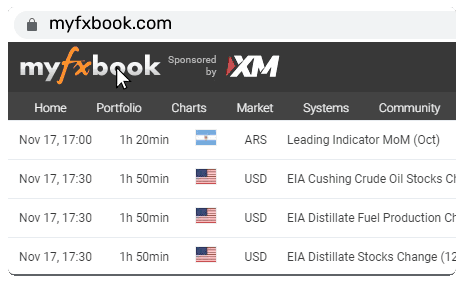Pound's Response, Eurozone Inflation, and Australian Dollar's Resilience

GBP: Unlucky bystander.
The British pound's recent movements have been conspicuously tethered to global dynamics, owing to the conspicuous absence of noteworthy domestic data releases. In the wake of a downward slide in the value of the US dollar, the pound managed to muster a climb above the 1.2650 mark against the greenback. However, in a comparative context with its currency counterparts, this ascent was characterized by a certain restraint. The current morning hours find GBP/USD engaged in a gradual descent, mirroring the broader trend observed in other currency pairs linked to the US dollar. Intriguingly, the pound's susceptibility to fluctuations in risk sentiment appears to be muted in the present circumstances.
Taking centre stage today is the EUR/GBP currency pair, eliciting attention due to the imminent release of inflation data within the eurozone. Notably, yesterday we were able to witness the EUR/GBP pair surmounting the significant barrier at 0.8600. The trajectory of this pair's movement may well be influenced by the forthcoming indicators of inflationary resilience in Spain and Germany. Positive indications could potentially fuel a sustained rally, testing the 0.8640 level that corresponds to the 100-day moving average.
Shifting our gaze to the British economic landscape, a significant juncture emerges as we anticipate mortgage approval statistics for the month of July, juxtaposed with supplementary credit-related metrics. The confluence of escalating interest rates and a dwindling demand for loans has already incited a correctional phase within the realm of UK housing prices. This correctional trend has brought about adjustments in the value of residential properties across the country. As these figures materialize, they are poised to offer insights into the trajectory of the housing market and the broader credit environment in the United Kingdom.
AUD: Lower inflation doesn't hurt Aussie dollar.
The Australian dollar experienced a momentary dip, briefly touching the 0.6450 level, before swiftly recovering its value after the revelation of monthly inflation data that defied expectations on the downside. The Consumer Price Index (CPI) for the month of July delivered a reading of 4.9% - a notable retreat from the preceding 5.4% figure and notably falling short of the consensus projection of 5.2%.
Engaging in a comprehensive discourse, ING economists have delineated the implications of this development. The outcome casts uncertainty over my prior prediction of a final interest rate hike by the Reserve Bank of Australia (RBA) within the fourth quarter. This shift in stance stems from the substantial emphasis policymakers have recently placed on the monthly inflation statistics. However, an underlying scepticism persists regarding the smoothness of the disinflation trajectory. The preponderance of the decline in inflation can be attributed to the exerted influence of base effects, which have effectively driven down inflation over the preceding months. In this juncture, the significance of labour market data is amplified. Should subsequent labour market readings echo a pattern of weakness, the prospect of the RBA enacting one last interest rate hike becomes exceedingly tenuous.
The Australian dollar has exhibited a propensity to trade at elevated levels despite the muted inflation figures. My prior analyses have spotlighted the underlying dynamics of AUD/USD, revealing the embedded negatives stemming from Australia's intricate relationship with China. Moreover, it is worth noting that market expectations for an RBA tightening measure were already modest even before the current CPI release. In this context, our assessment aligns with the potential for an AUD/USD resurgence from its existing levels. This outlook is underscored by the recognition that various factors continue to shape the Australian dollar's performance within the broader market landscape.
This content may have been written by a third party. ACY makes no representation or warranty and assumes no liability as to the accuracy or completeness of the information provided, nor any loss arising from any investment based on a recommendation, forecast or other information supplied by any third-party. This content is information only, and does not constitute financial, investment or other advice on which you can rely.



















